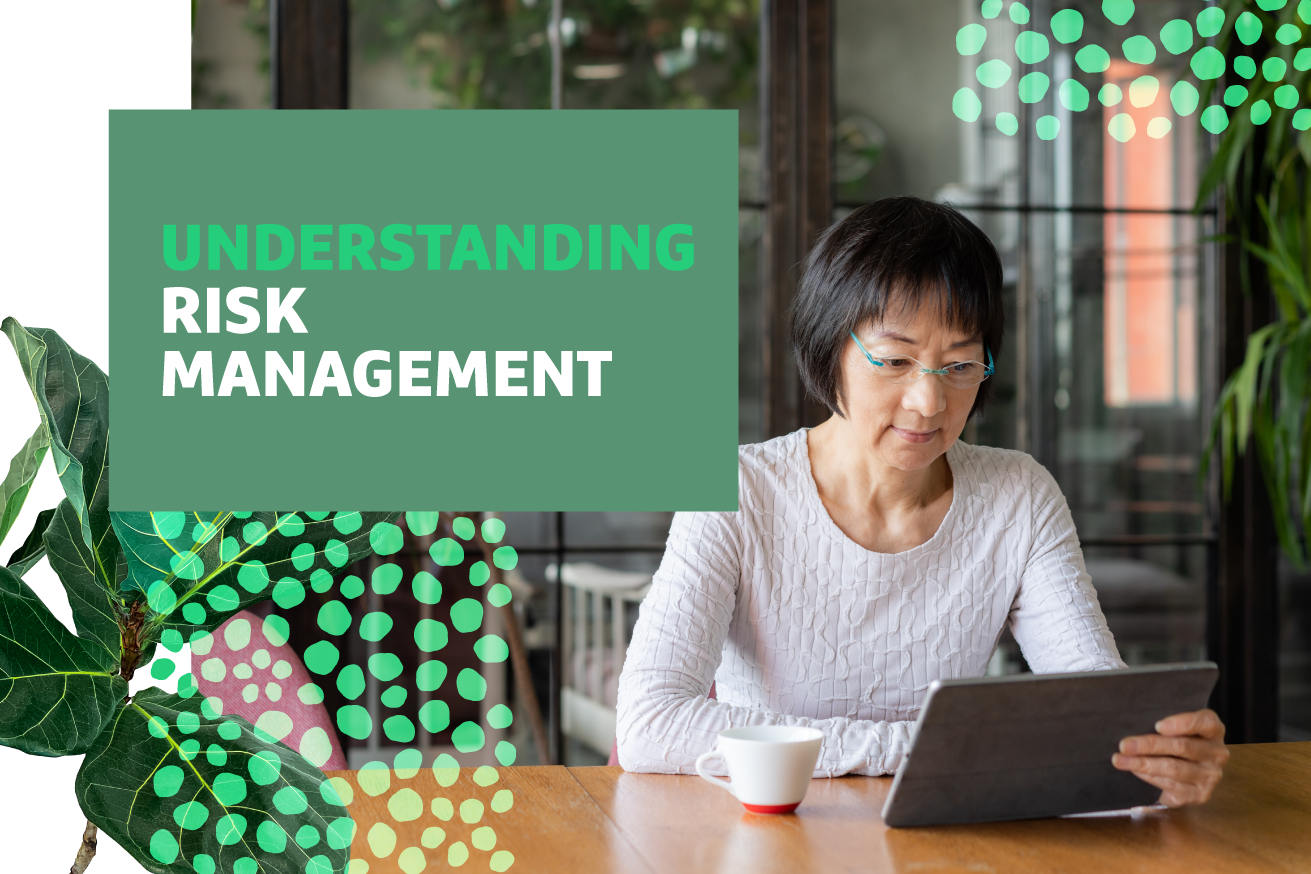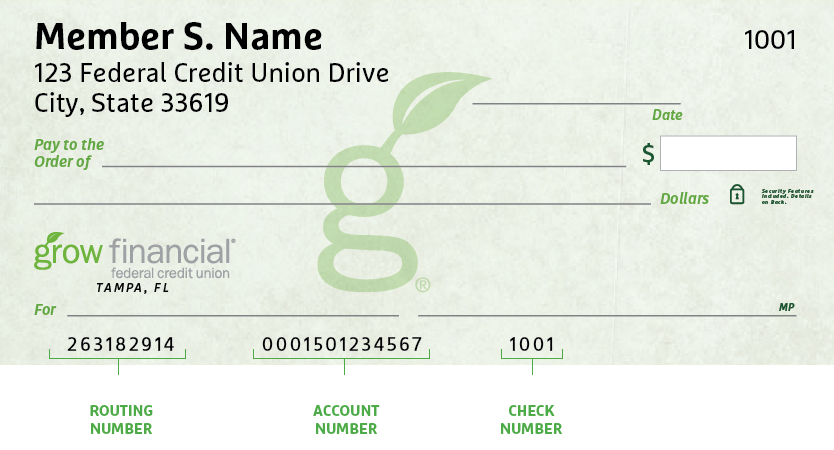- Personal
- Membership
- Membership
- Rates & Fees
- Checking
- Checking
- Personal Loans
- Personal Loans
- Wealth Management
- Investment Services
- Life Events
- Trust and Will
- Financial Advisors
- Business

May 18, 2022
Risk Management: Five Things to Do for Your Retirement Savings Plan
If you’re investing in your retirement plan, we think you’re off to a great start when it comes to a happy retirement. You are helping to manage a critically important financial risk: the chance that you will outlive your money. Next, think about including these five steps as part of your risk management strategy.
1. Familiarize yourself with the different types of risk.
All investments, even the most conservative, come with risk. Understanding these risks will help you make educated choices in your retirement savings plan mix. Here are just a few to consider:
- Market risk: The risk that your investment could lose value due to falling prices caused by outside forces including economic factors or political and national events (things like elections, natural disasters and wars). Stocks are typically the most susceptible to market risk, although bonds and other investments can be affected too.
- Interest rate risk: The risk that an investment’s value will fall due to rising interest rates. This type of risk is most associated with bonds, as bond prices typically fall when interest rates rise, and vice versa.
- Inflation risk: The chance that your investments will not keep pace with inflation. Investing too conservatively may put your investment dollars at risk of losing their purchasing power.
- Liquidity risk: This is the risk of not being able to quickly sell or cash in your investment if you need access to the money.
- International investing risks: Currency fluctuations, political upheavals, unstable economies, additional taxes and others.
2. Know your personal risk tolerance.
Do you know how much risk you are willing to take on in pursuit of your savings goal? If you don’t, that’s an important first step in your risk management strategy, and we’ve got a new way to help you figure it out. To learn about understanding your own risk tolerance, read about Riskalyze, your personalized risk assessment tool.
3. Develop a target asset allocation.
Next, you’ll need to develop an asset allocation mix that is suitable for your investment goals while taking your risk tolerance into consideration. Asset allocation refers to the process of dividing your investment dollars among the various asset categories offered in your plan, typically stocks, bonds and stable-value investments. Generally, the more tolerant you are of investment risk, the more you may be able to invest in stocks. If you’re more risk-averse, you may want to invest a larger portion of your portfolio in conservative investments, such as high-grade bonds or cash. Your time horizon also comes into play, as younger investors are typically able to take on more risk, while people approaching retirement tend to shift toward a more conservative asset mix.
No matter what, be sure to diversify. All investors — whether aggressive, conservative or somewhere in the middle — can potentially benefit from diversification, which means not putting all your eggs in one basket. Holding a mix of different investments may help your portfolio balance out gains and losses.
4. Understand dollar-cost averaging (DCA).
When you contribute to your retirement plan, chances are you contribute an equal dollar amount each pay period, and that money is then used to purchase shares of the investments you have selected. This process — investing a fixed dollar amount at regular intervals — is DCA. As the prices of the investments you purchase rise and fall over time, you take advantage of the swings by buying fewer shares when prices are high and more shares when prices are low, in essence, following the old investing adage to “buy low.”
5. Perform regular maintenance.
Although it’s generally not necessary to review your retirement portfolio too frequently, it’s advisable to monitor it at least once per year and as major events occur in your life. During these reviews, you’ll want to determine if your risk tolerance has changed and check your asset allocation to determine whether it’s still on track. You may want to rebalance to bring your allocation back in line with your original target, presuming it still suits your situation. Or you may want to make other changes in your portfolio to keep it in line with your changing circumstances. This regular maintenance is critical to help manage risk in your portfolio.
When developing a risk management plan, it may also help to seek the advice of a financial professional. An experienced professional can help take emotion out of the equation so that you may make clear, rational decisions.
Questions? Contact a CFS Financial Advisor.
Grow has contracted with CUSO Financial Services, L.P. (CFS) to provide investment services, and your CFS Financial Advisor will help you build a plan that meets your needs. The advisor will look at your current spending, saving and investing, learn about your goals and priorities, make objective recommendations and support your efforts moving forward through the implementation and management of your plan.
SCHEDULE A COMPLIMENTARY CONSULTATION
Non-deposit investment products and services are offered through CUSO Financial Services, LP (“CFS”) a registered broker-dealer (Member FINRA/SIPC) and SEC Registered Investment Advisor. Products offered through CFS: are not NCUA/NCUSIF or otherwise federally insured, are not guarantees or obligations of the credit union, and may involve investment risk including possible loss of principal. Investment Representatives are registered through CFS. The Credit Union has contracted with CFS for investment services. Atria Wealth Solutions, Inc. (“Atria”) is a modern wealth management solutions holding company. Atria is not a registered broker-dealer and/or Registered Investment Advisor and does not provide investment advice. Investment advice is only provided through Atria’s subsidiaries. CUSO Financial Services, LP is a subsidiary of Atria. Abridged from content provided by Broadridge Investor Communication Solutions, Inc. Copyright 2022.
Posted In:
How to Find Your Routing & Account Numbers
When you make a payment online, by phone or on a mobile device, you may be asked for our routing number and your checking account number. Credit unions and banks use these numbers to identify accounts and make sure money gets where it’s supposed to be. You’ll also need to provide your routing and checking account numbers for:
- Direct deposits
- Electronic checks
- Military allotments
- Wire transfers
Where to Find Your Routing & Checking Account Numbers
Your personal checks include both our routing number and your account number, as shown on the Grow check example below.

Don’t have a Grow check? No worries.
Visit any Grow store and ask for a Direct Deposit Form. It lists both your routing number and checking account number.
Making a Loan Payment
When it comes to making payments, we try to make it as painless as possible to pay your loan every month. We have several different ways to pay, including convenient online options.
Pay Online
You have two ways to pay online by transferring funds from another bank or credit union.
- Grow Online Banking (Preferred payment method for any loan)
This is the simplest way to pay your loan. You can make one-time payments or set up automatic recurring payments in Grow Online Banking. Once you log in, select “Transfer/Payments” from the menu. If you’re not enrolled in Grow Online Banking yet, you can set up your account in just a few minutes.
Log In
- Debit Card or ACH (Available for auto, personal loans and HELOCs)
Note: ACH and debit card payments are not available for credit cards or most mortgages, except HELOCs.
We accept ACH payments with no additional fees or Mastercard® and Visa® debit cards with a convenience fee of $4.95. To get started with an online ACH or debit card payment, select Pay Now below.
Pay Now
Pay by Mail
You can also pay any Grow loan by check through the mail. Please remember to include your account number and Grow loan number on the check. (For credit card payments, please do not write your 16-digit credit card number on the check, which can cause a delay in processing the payment.)
Address for auto, credit card, personal loan and HELOC payments:
Grow Financial Federal Credit Union
P.O. Box 75466
Chicago, IL 60675-5466Address for personal first or second mortgages and home equity payments:
Grow Financial Federal Credit Union
P.O. Box 11733
Newark, NJ 07101-4733You Are About To Leave GrowFinancial.org
At certain places on this site, there are links to other websites. Grow Financial Federal Credit Union does not endorse, approve, represent, certify or control those external sites. The credit union does not guarantee the accuracy, completeness, efficacy, timeliness or accurate sequencing of the information contained on them. You will not be represented by Grow Financial Federal Credit Union if you enter into a transaction. Privacy and security policies may differ from those practiced by the credit union. Click CONTINUE if you wish to proceed.
